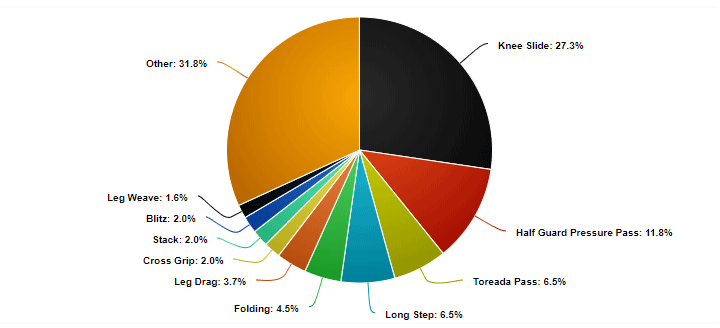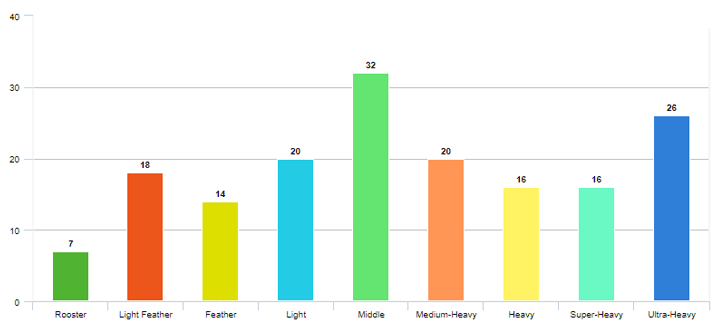Guard passing is a key element in jiu-jitsu, and an influential facet of the game in both gi and nogi branches of the sport, unlike the sweeping game which is vastly more dominant with the gi but holds lesser value in submission grappling. We will, however, be addressing solely the gi in this study.
Another way in which the guard pass affects the outcome of a match in a more influential manner than the sweep is showcased by a simple statistic. While there are plenty more sweeps occurring on average in a jiu-jitsu match, at the highest level, (over 3x more), the athlete who conquers the sweep will “only” have a 64% likelihood of winning the match, according to the numbers. An athlete who secures a pass, however, will have increased his chances of victory by 99.6%.
The data here displayed was collected from 6 key tournaments of the International Brazilian Jiu-Jitsu Federation (IBJJF), arguably the sport’s most important league. Namely the 2016, 2017, 2018 and 2019 World Jiu-Jitsu Championships as well as the 2018 and 2019 Pan Jiu-Jitsu Championships, a total of 1089 matches observed in the adult black belt division.
The fact that the guard pass is such a deciding winning factor under the IBJJF ruleset does not mean guard passes are easy to find. In fact, the average guard pass in a jiu-jitsu gi match is 0.2 per match, a far cry from a sweep whose average stands at 1.4.
One look at this board and you will notice one guard pass vastly surpassing all other techniques in numbers of success.

The knee slide – which has other common names such as knee-cut or “flecha” in Portuguese, is indeed one of the most popular and powerful passing sequences in our sport. One used by many of the passing “greats” of the modern jiu-jitsu era, particularly Lucas Lepri and Leandro Lo.
An interesting side note is that, although demonstrably the most common guard pass style of today, the knee slide was only used twice, by the sport’s most prolific passer – Marcus Almeida
and both against the same opponent, Victor Honorio in two different years, 2016 and 2017 at the Mundial. Almeida who currently holds a 0.68 average guard pass per match and one of the highest work rates in the sport, let alone the ultra-heavyweight division.
Another point to take from this exercise is the lack of passes from one’s knees. The vast majority of modern-day passers do so from a standing position as opposed to the old school kneeling, which allowed better defense against the De La Riva hook and X-guard entries but has a substantial disadvantage in the speed department.
NOTE: There have been a few requests to clarify the Half Guard Pressure Pass described on the pie-chart. Half.guard pressure passes represented all passes from chest-to-chest half-guard that did not morph into a knee slide. Some of these HGPP did end up being 3/4 mount passes, or double underhook passes to mount.
There is a common cliché that the lighter weights do not pass guards, that perception is proven to be untrue by this statistic, which spreads the total number of guard passes in each division at the World Jiu-Jitsu Championship (2016-2019).

With the exception of the rooster-weights, the light-feather and featherweights are just as competitive as the heavier athletes in the passing department, and even the roosters lack of passing in numbers can be explained by their divisions traditionally being substantially smaller than all others. Lesser matches = lesser passes.
Another statistic interesting to pass on was that, throughout these 4 years of World Championship stats, an average of 4 out of 10 back controls were conquered while attempting to pass the guard. Guard Pass Attempt > Guard Player Turtle’s > Back is Secured.
These statistics make an excellent excuse for all lovers of the game to study guard passing, possibly following well-proven systems like the ones shown above.
















Hello!
Do you have a current database on bjj positions, passes, sequences, submissions, etc.?